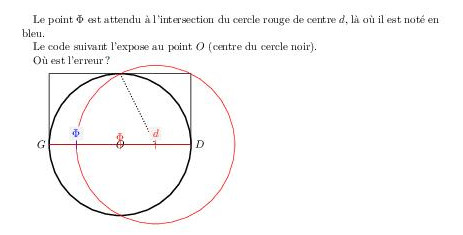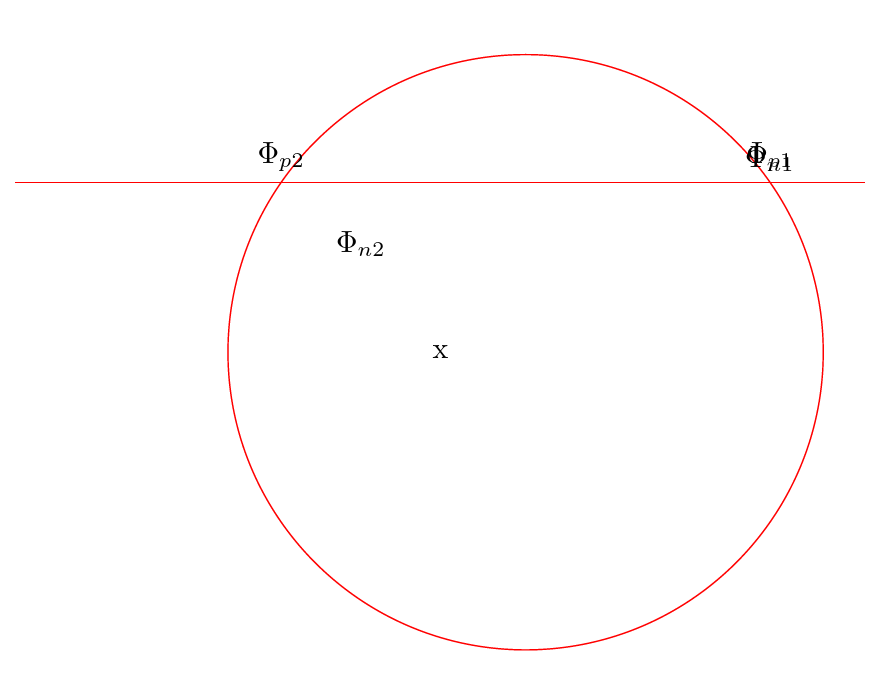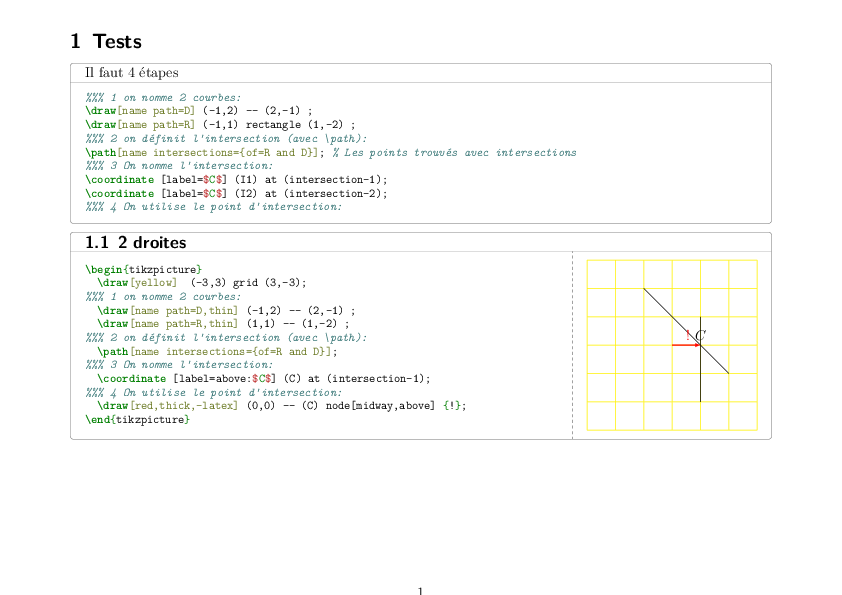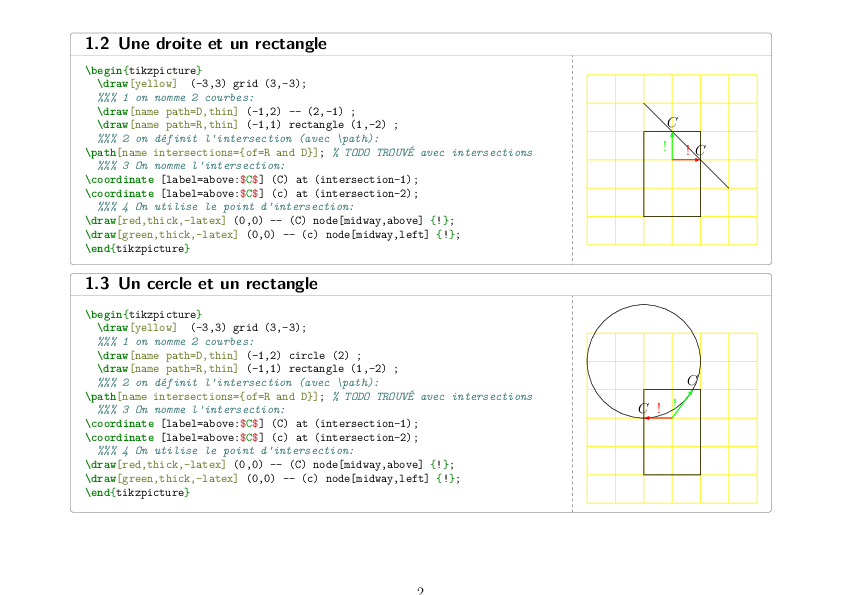|
Le point Phi est attendu à l'intersection du cercle rouge de centre d et de la droite G-D là où il est noté en bleu. Le code suivant l'expose au point $O$ (centre du cercle noir). Où est l'erreur?
\documentclass[a4paper,11pt,french,]{scrartcl} \usepackage{tcolorbox} \tcbuselibrary{skins} \usepackage{tikz,pgf} \usetikzlibrary{intersections} \usetikzlibrary{arrows,shapes,snakes,calc, angles,quotes,positioning,automata,shadows,patterns} \usepackage[french]{babel} \begin{document} Le point $\Phi$ est attendu à l'intersection du cercle rouge de centre $d$, et de la droire rouge G--D, là où il est noté en bleu. Le code suivant l'expose au point $O$ (centre du cercle noir). Où est l'erreur? \begin{tikzpicture}[scale=0.25] % % Cercle \coordinate (H) at (0,10); \coordinate (D) at (10,0); \node[right] at (D) {$D$}; \coordinate (G) at (-10,0); \node[left] at (G) {$G$}; \node at (0,0) {$O$}; \draw[very thick] (0,0) circle (10); % % Carré: \coordinate (X) at (-10,10); \coordinate (Y) at (10,-10); \draw[] (X) rectangle (D); % %% centre d et cercle de rayon d-H: \coordinate (d) at (5,0); \draw[dotted,thick] (H) -- (d); \node[above] at (d) {\tcbox[size=fbox,coltext=red,colframe=white]{$d$}}; \node[red] at (5,0) {\footnotesize |}; %%% Intersection Phi: (BUG) \draw[name path=d,red] (5,0) circle (11.18); \draw[name path=GD,red] (G) -- (D); \node[thick,red,name intersections={of=d and GD}] (intersection-1) {\footnotesize |}; \node[thick,red,above,name intersections={of=d and GD}] (intersection-1) {$\Phi$}; %%% Par sa mesure: \coordinate (Phi) at (-6.18,0); % TODO À TROUVER avec intersections \node[above,blue] at (Phi) {\tcbox[size=fbox,coltext=blue,colframe=white]{$\Phi$}}; % TODO TROUVÉ avec intersections \node[blue] at (-6.18,0) {\footnotesize |}; % TODO TROUVÉ avec intersections \end{tikzpicture} \end{document} |
|
Pour une raison que j'ignore, les coordonnéees des points d'intersection semblent être divisées par 2 quand ils sont calculés via la commande
|




